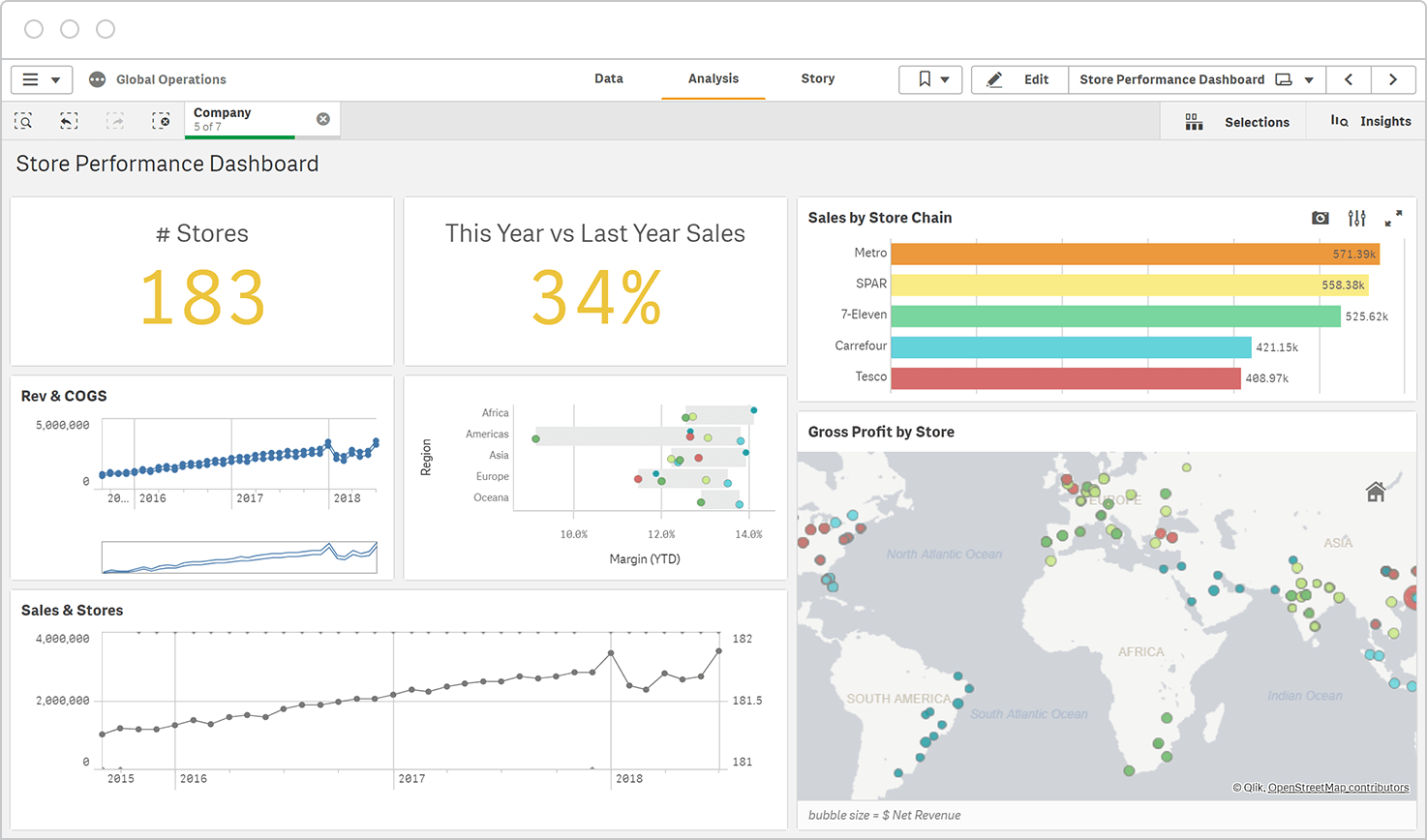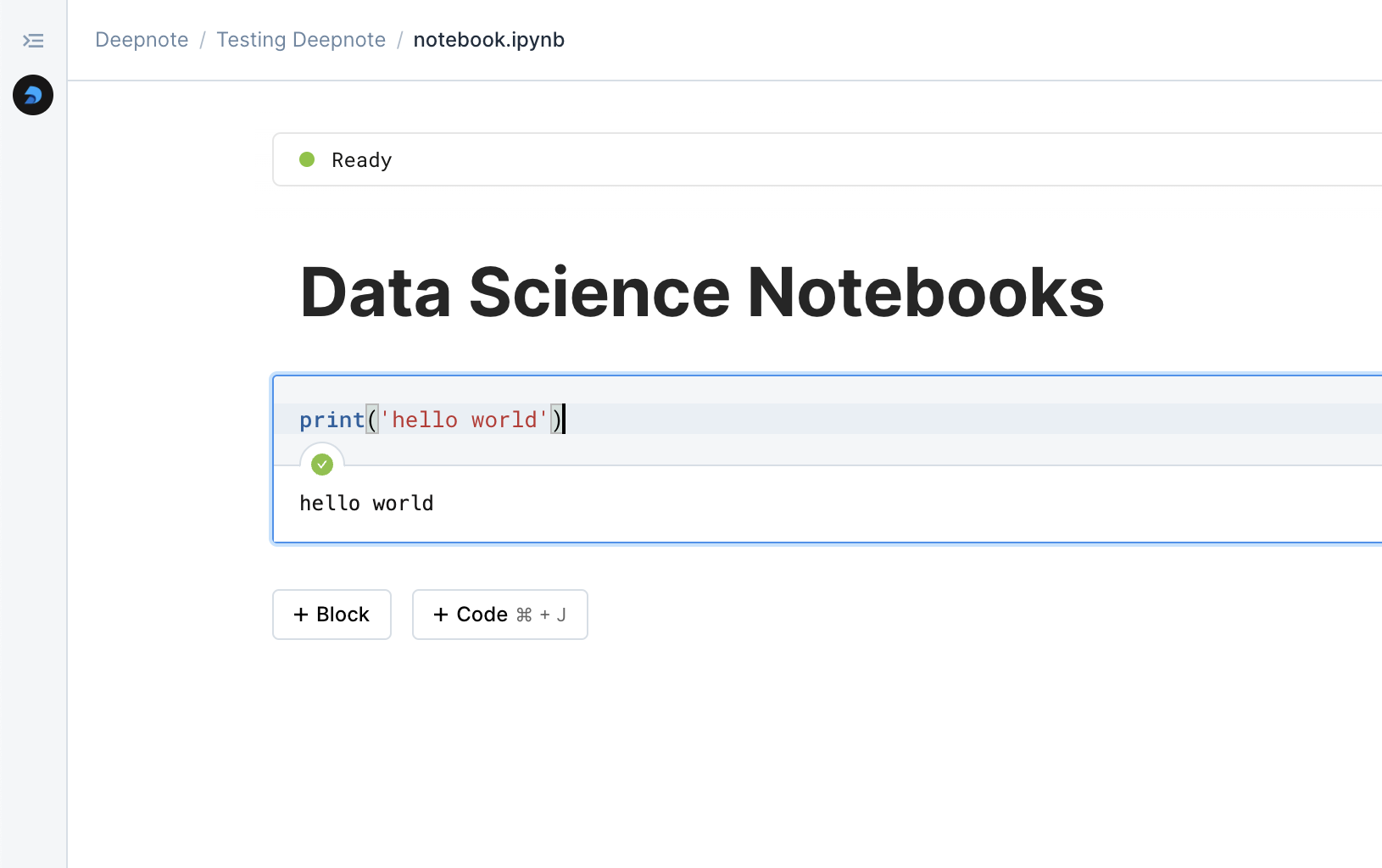

Qlik

Comparing two data science notebooks.






In the evolving landscape of data platforms, Qlik and Deepnote represent fundamentally different approaches to working with data. While both platforms aim to help organizations derive value from their data, they serve distinct needs within the analytics ecosystem.
Qlik positions itself as an end-to-end data analytics and business intelligence platform, emphasizing its associative analytics engine and augmented intelligence capabilities. The platform focuses on making complex data relationships visible and accessible to business users through interactive visualization and analysis.
Deepnote takes a more technical approach, focusing on collaborative data science workflows through notebook-based development. The platform emphasizes real-time collaboration among data professionals while providing comprehensive integration capabilities for modern data science work.
Qlik's approach centers on its unique associative engine, which maintains all data relationships and allows users to explore data from any angle. This technology enables users to discover hidden insights through interactive exploration, supported by AI-driven suggestions and automated analytics. The platform excels at helping users understand complex data relationships without requiring technical expertise.
Deepnote provides a more traditional data science environment enhanced with modern collaboration features. The platform focuses on providing a comprehensive notebook experience where data scientists can write code, analyze data, and collaborate in real-time. Its approach emphasizes flexibility and extensibility for technical teams requiring precise control over their analyses.
Qlik offers a sophisticated yet accessible interface designed for interactive data exploration. The platform combines drag-and-drop functionality with powerful analytical capabilities, making it possible for users of varying technical abilities to perform complex analyses. Its associative engine automatically highlights relationships and patterns that might otherwise go unnoticed.
Deepnote presents a more technical interface focused on code-based analysis and development. The platform combines familiar notebook functionality with modern features like real-time collaboration and integrated development tools. This creates an environment optimized for data scientists who need complete control over their analytical processes.
Qlik's approach to data handling emphasizes its associative engine, which can combine data from multiple sources while maintaining all relationships. The platform excels at processing large datasets and making them accessible for interactive analysis, with particular strength in maintaining data lineage and relationships.
Deepnote takes a more flexible approach to data integration, offering direct connections to various data sources and computing environments. The platform supports custom data processing through code, making it particularly suitable for complex data transformation and analysis requirements.
Qlik excels in creating interactive visualizations and dashboards that respond dynamically to user selections. The platform's associative engine enables users to see relationships in their data that might be missed in traditional analysis tools. This makes it particularly valuable for exploratory data analysis and business intelligence.
Deepnote approaches visualization through a more technical lens, providing flexibility in creating custom visualizations through code. While the platform supports various visualization libraries, its focus is more on the development process and technical analysis rather than creating polished business dashboards.
Qlik's collaboration features focus on sharing insights and analyses across an organization. The platform supports different levels of access and interaction, allowing organizations to maintain control over data access while facilitating broad consumption of analytics insights.
Deepnote emphasizes real-time collaboration among data professionals, enabling simultaneous work on analytical problems. The platform's features support technical collaboration through code sharing, version control, and integrated communication tools.
Qlik serves organizations needing comprehensive business intelligence and data exploration capabilities. The platform particularly suits:
Deepnote caters to data science teams requiring a technical development environment. The platform excels for:
The decision between Qlik and Deepnote often reflects fundamental differences in organizational needs and use cases. Teams requiring comprehensive business intelligence capabilities and interactive data exploration might find Qlik's approach more aligned with their needs. Its associative engine and visualization capabilities make it particularly valuable for organizations prioritizing business analytics and data discovery.
Organizations focusing on data science and custom analysis might find Deepnote more suitable. Its emphasis on technical development and collaboration creates an environment well-suited to data science teams requiring flexibility and control over their analytical processes.
Both platforms continue to evolve, with Qlik expanding its AI and machine learning capabilities while maintaining its strength in associative analytics. Deepnote continues to enhance its collaborative features and integration capabilities to serve modern data science teams.
Qlik and Deepnote serve distinctly different needs in the data platform ecosystem. Qlik excels in providing a comprehensive business intelligence platform, particularly valuable for organizations requiring interactive data exploration and visualization. Its associative engine and augmented intelligence capabilities make it uniquely suited for discovering hidden insights in complex data.
Deepnote offers a more focused platform for data science teams, emphasizing technical development and collaboration. Its support for custom analysis and extensive integration options makes it particularly valuable for teams requiring sophisticated analytical capabilities.
The choice between these platforms should align with your organization's primary needs and the type of data work you perform. Understanding these distinctions helps ensure you select the platform that best supports your specific use cases while providing the necessary tools for success in your data work.